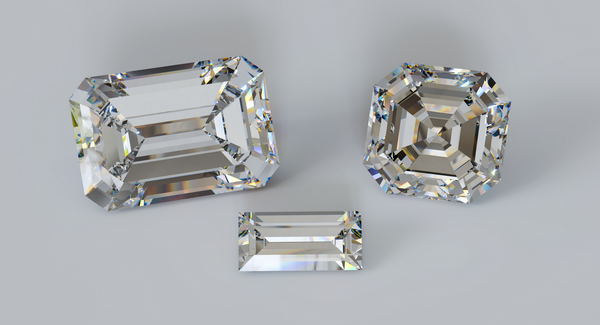The Popularity Of Lab Grown Diamonds
Lab-grown diamonds, as products of high technology in the laboratory, continue the sparkling brilliance of diamonds and have emerged in the jewelry world. These diamonds break the inherent notion of diamond scarcity, and with the development of science and technology, their quality is constantly improving and can reach VVS level or even higher. At the same time, lab diamonds can achieve a large carat level and are more cost-effective. The concept of green sustainability is also something that natural diamonds lack.
However, replicating the path of mined diamonds and comparing all aspects to natural diamonds may make lab diamonds seem like a cheap substitute, which is ultimately detrimental to the development of the lab diamond industry. To maintain their independence and create a unique line of development, lab diamonds must find their own charm and escape the shadow of natural diamonds. The power of technology, market demand, design and cut, and brand culture are four aspects that can help lab diamonds find their unique path for development.
The Power of Technology
Lab diamonds are born in the laboratory as high-tech "enriched" products that are physically, chemically, and optically identical to natural diamonds. The current methods of synthesizing lab diamonds are mainly High-Pressure High Temperature (HPHT) and Chemical Vapor Deposition (CVD). The preparation time is only half a month to one month.
The new concept of lab diamonds is gradually recognized and accepted. Man-made diamonds, first created in 1952, have progressively gained widespread attention in the industry over the past few years after 50-60 years of development. During 2018-21, the U.S. Federal Trade Commission, GIA, etc., have deleted the word "natural" and recognized the concept of lab-created diamonds. In contrast, domestic and foreign authoritative jewelry appraisal institutions GIA, NGTC, IGI, etc., have successively opened the market for lab diamond testing business and can issue special test certificates or grading reports, providing healthy guidance for the standardized development of the industry.
In recent years, with increased consumer acceptance, more and more practitioners have moved into lab diamonds, and the wave has intensified as well-known jewelry brands such as De Beers and Swarovski have ventured into the field of lab diamonds. This is due to the increasing sophistication of diamond cultivation technology.
In addition, the production process of lab diamonds is relatively simple and environmentally friendly. According to Frost & Sullivan, the harmful carbon emissions from diamond mining is 57,000 grams per carat. In comparison, lab diamonds only release 0.028 grams per carat, which has the advantages of outstanding cost performance and versatility.
Driving Force - Market Demand
Diamond consumption is gradually transforming from the "high amount and low frequency" mode, which was absolutely dominated by marriage in the past, to the "low amount and high frequency" of "self-reward". Consumers are gradually shifting to younger groups. At the same time, the concept of consumption has changed. "New," "modern," "interesting," "fashionable," "attractive," or "self-treating" have given lab diamonds a unique position in the jewelry sector.
At the same time, with the epidemic effectively under control, most consumers plan to spend the same or more on diamond jewelry. As the population becomes more willing to improve their quality of life, this will effectively boost the end-use of diamond jewelry.
Glamour - Design and Cut

Every brilliant diamond needs to be designed and cut to perfection for the rough diamond to be transformed and blossom into the most sparkling fire! The non-renewable and expensive nature of natural diamonds has led to certain limitations in jewelry design, and the use of wedding scenarios has often led to mundane and straightforward designs, lacking boldness and innovation.
Lab-grown diamonds are fundamentally different from natural diamonds and their unique characteristics have made them increasingly popular. By breaking traditional limitations, lab-grown diamonds can be customized in terms of size, shape, color, and clarity to meet the needs of consumers. This allows for greater creativity in the design process, opening up new possibilities in the diamond industry.
The famous advertising slogan, "A diamond is forever," has made natural diamonds the darling of the wedding market for hundreds of years. However, lab-grown diamonds, which are born in a laboratory and incorporate environmental protection into their production, redefine the sparkle of a diamond. Despite their unique charm, lab-grown diamonds are often compared to natural diamonds, and consumer acceptance of them remains low, largely due to a lack of trust and brand protection.
The value of diamonds is no longer limited to the product itself but is increasingly becoming a result of "consciousness" feedback, which can be understood as "identity" or "demand." To establish a unique culture for lab-grown diamonds, branding is essential. Products with brand support have a more stable customer base than similar products without it, and brand endorsement for lab-grown diamonds can help break the "stubborn perception" of domestic consumers and make lab-grown diamond jewelry more widely accepted.



Leave a comment